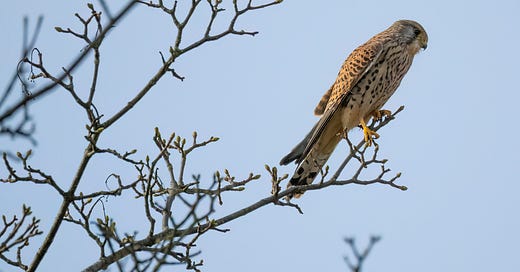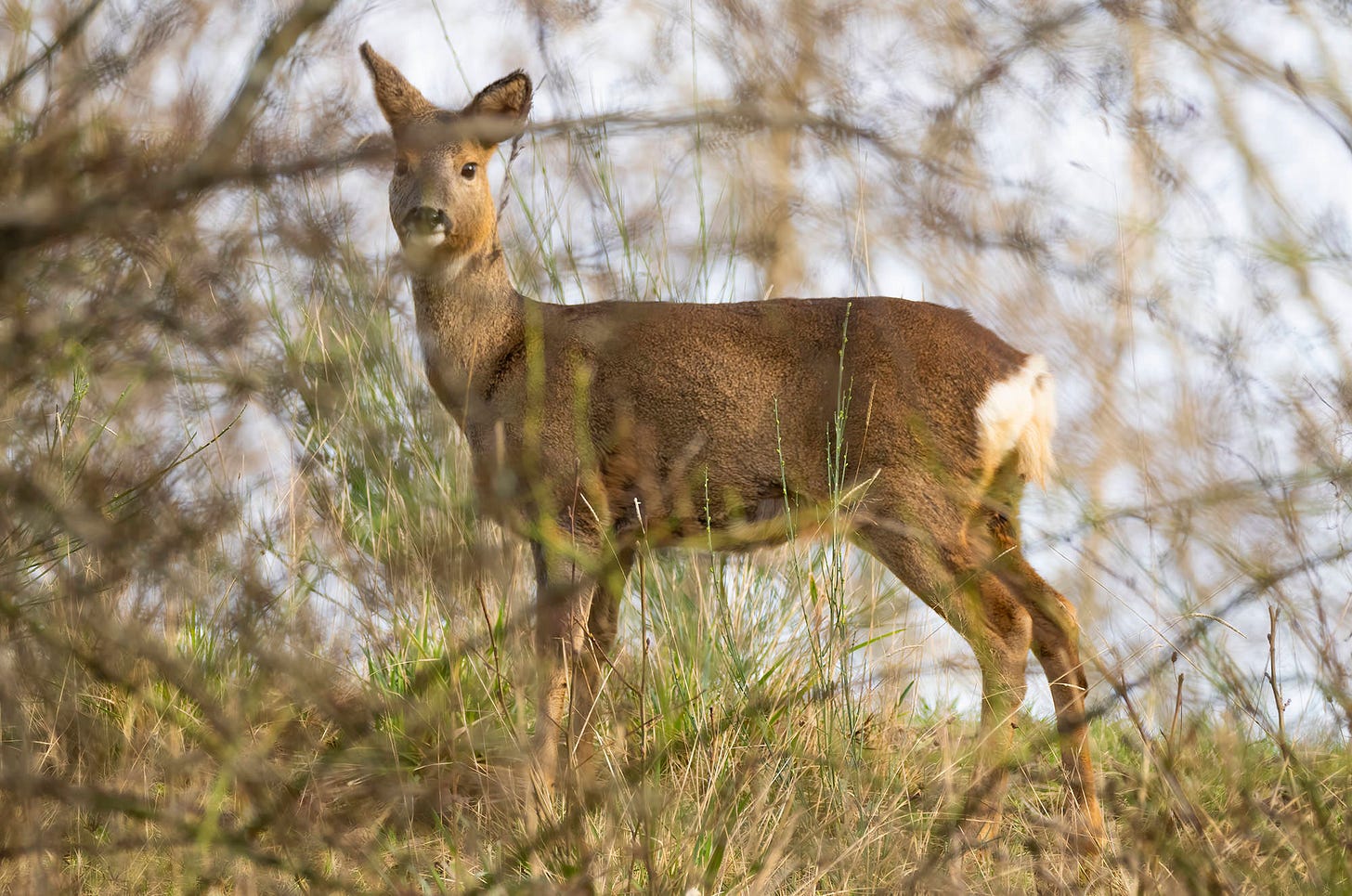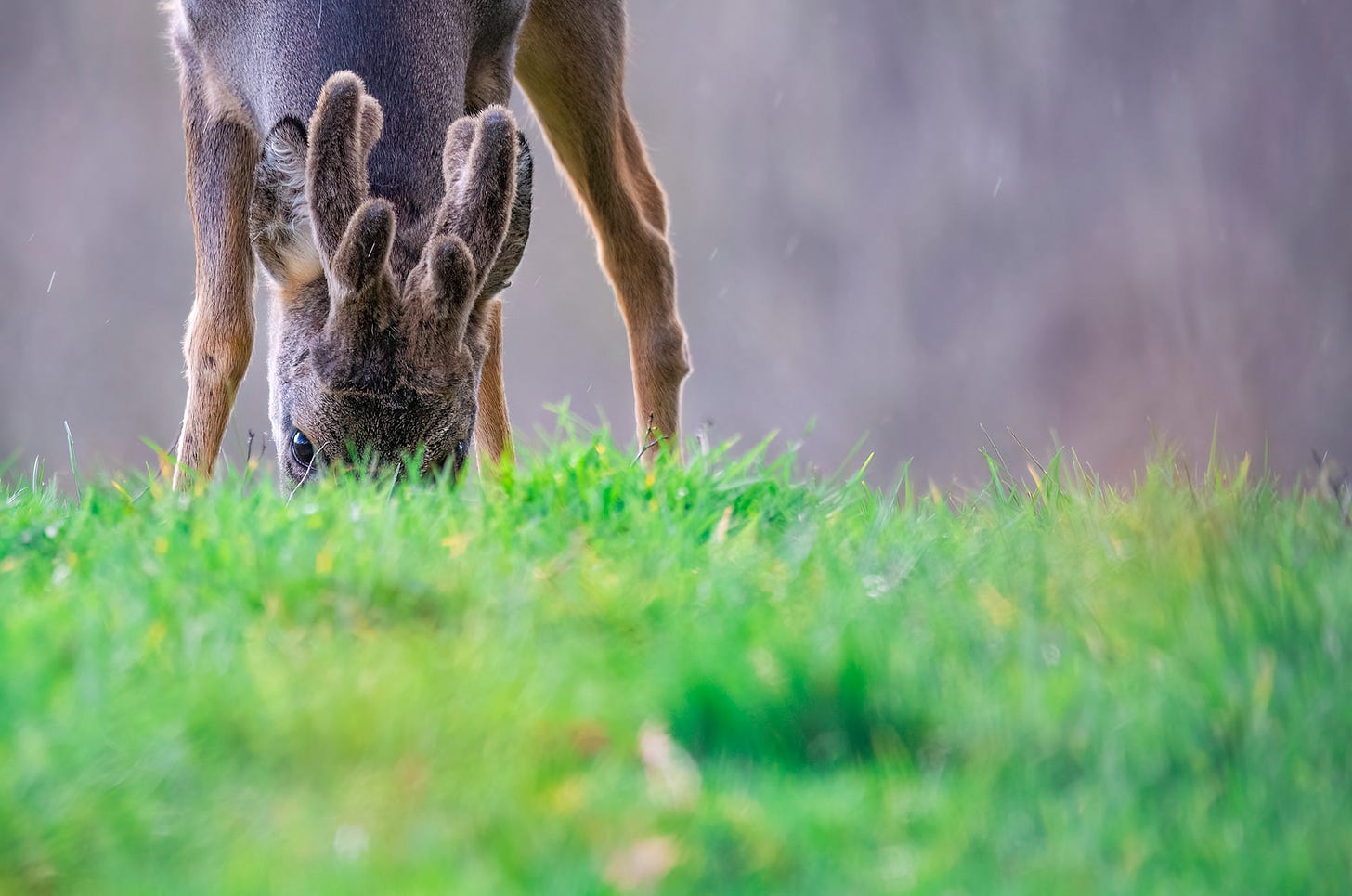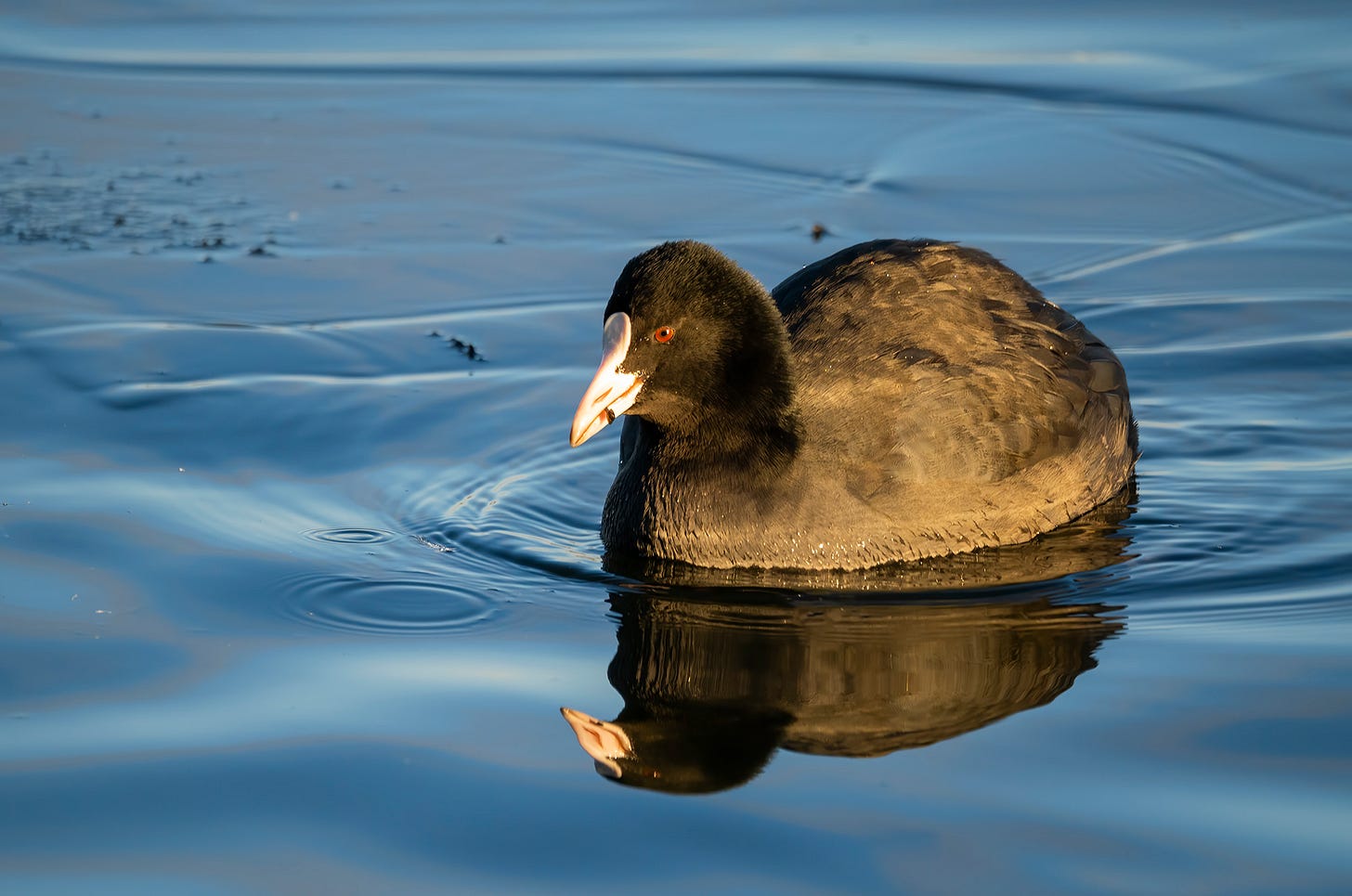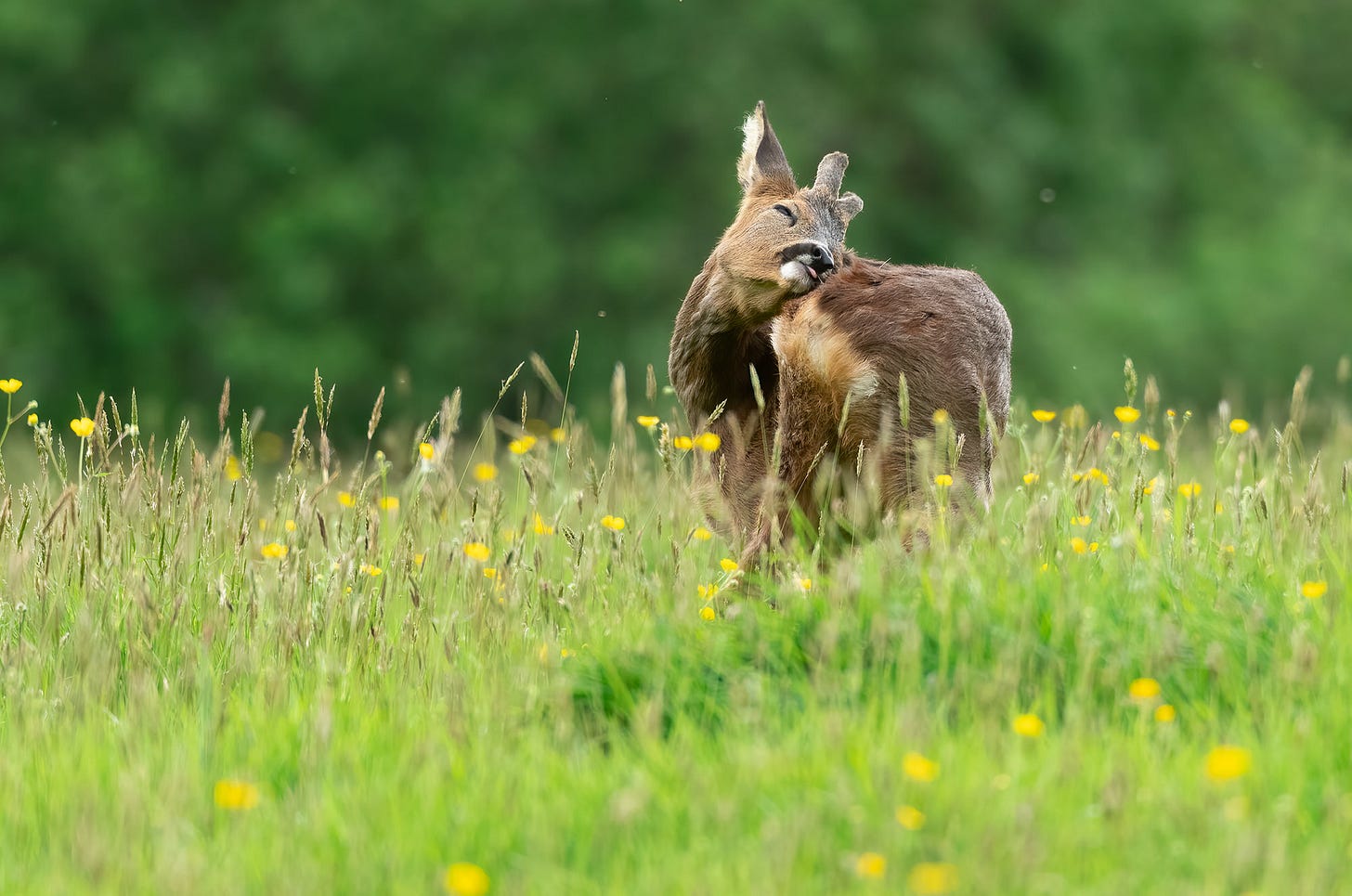February 2024 Viewfinder
Patience pays off (finally!) in this month’s Opposite View Wildlife Photography newsletter.
They say good things come to those who wait.
Patience is, indeed, a virtue but it is not a quality I am known for. Well, not until recently, anyway. Even when I began photographing wildlife, I struggled to comprehend watching a bird for ages, waiting for it to do something interesting. If a potential subject didn’t grab my attention within the first few minutes of spotting it, I tended to walk on to see what was around the corner.
I have since learned the value of waiting. This month’s species spotlight blog is about the waterbird that taught me why sitting and watching can be incredibly rewarding... and a little bit scary. More about that below.
That said, I still prefer being on the move to sitting still for hours in a hide, so my lunch breaks are spent walking the same routes to see what appears. Persistence, as well as patience, has been the key for me. Turning up in the same spots day after day for the past two years enabled me to build relationships with the local roe deer.
However, you may remember me mentioning that after the disappearance of the matriarch, Blue, and the old buck, Quint, I felt the connection had broken. Nothing is more important than the well-being of the deer, and I was adamant that I would never cause stress to the remaining individuals.
Now, after months of wondering if the deer I knew as kids would ever recognise and accept me like they used to, I feel like there has been a step forward. In the past couple of weeks, I have managed to spend quality time with ‘the trio’ – the young buck (who I believe is the kid I named Russet) and two young does (one I think is the kid I named Beta, and the other is hopefully Ruby). They appear relaxed in my company and seem to recognise the sound of my voice, which I use to reassure them when I am some distance away or partially obscured in the woods. During these recent encounters, I have captured some of my favourite images.
Why am I waffling on about this? Well, to encourage you to hang on in there if you are considering giving up on a subject or a location. Wait a little bit longer. Be patient. All those annoying things your parents used to say when you were a child – all of which I regularly ignored as the most impatient kid in England. As long as the welfare of your subject always comes first, stick with it. When the breakthrough feels furthest away, it is sometimes just around the corner.
Also, my work with the deer proves that even if you don't have a lot of time each day, persistence and repetition can be just as important as spending large chunks of time in the field - something that all of us who work full-time, or have other life commitments which restrict our time outdoors, need to remember.
Talking of giving up due to a lack of patience, we went to Hamiltonhill Claypits Local Nature Reserve last weekend for the first time since we were coming out of one of the COVID lockdowns. We previously visited on a rainy day, walked along the canal, saw earth movers on the nature reserve side of the water and just wrote it off as a place to watch wildlife.
I was then reminded of it recently and, as we needed somewhere local to visit due to my work commitments, we decided to give it another go. Well, since we were last there, I am delighted to report that the wildlife has well and truly made itself at home.
On entering the reserve, we were immediately greeted by a kestrel landing in a tree in front of us. We watched a heron unsuccessfully fishing, while we looked in vain for the famous water rail. We even had a pretty close encounter with one of the roe deer. Although, as you can see in the image below, that particular doe wasn’t as relaxed about it as my deer and kept a close eye on us from her elevated viewpoint.
A reserve I had dismissed offhand from a short visit, may quickly become one of my favourite wildlife-watching spots in Glasgow. I should have had a bit more patience. For now, I’ll leave you with an image of the female kestrel that welcomed us into the Claypits.
Best wishes,
Rhiannon
Opposite View Wildlife Photography
Through my lens
Making a meal of it - focusing on feeding behaviour for wildlife photography
Portrait images are bread and butter for a wildlife photographer - there is a reason why the portrait category is usually the most popular in wildlife photography competitions. But, more often than not, our aim is to capture the unique behaviours of the species we have chosen to point our lens at. Not only can images of these moments reveal fascinating insights into the lives of the animals, but they also demonstrate that our subjects are relaxed enough around us to behave naturally in our presence.
However, as an amateur wildlife photographer, you might struggle to have enough time with a subject to witness these behaviours. Well, there is one activity that all animals need to do - fish gotta swim, birds gotta fly, and everything has to eat.
In this blog, I explain what you should look out for to increase your chances of photographing feeding time for your local wildlife.
Species Spotlight
Coot - the bold, not bald, waterbird
Even the most casual bird observer will spot that coots are not bald. The expression ‘bald as a coot’ comes from the featherless white patch or ‘frontal shield’ just above the bird’s bill. Some might say ‘common as a coot’ is more appropriate, with this bird being a familiar sight on our waterways. However, if you pause to watch a coot for a while, the phrase ‘bold as a coot’ becomes fitting. Its striking monochrome appearance suits its confident - and often combative - demeanour.
In this blog, I explain why this monochrome waterbird is anything but monotonous.
And finally…
As part of National Mammal Week at the end of last year, the Mammal Society ran a series of webinars, with one of these focusing on ethical wildlife photography. Unsurprisingly, that familiar word patience came up in the session, which featured insights from photographer and writer Susan Young and wildlife photographer Dani Connor. I recommend watching the session in full, as it covered some important points - notably, for me:
The importance of minimising disturbance and ensuring the well-being of your subject.
Why you should adapt your approach to both the subject and location - e.g. deer in the Royal Parks vs deer in the hills.
How you can use trail cameras to photograph wildlife ethically - either by capturing images remotely or using footage to research your subject (watch my video on this topic on YouTube).
There was also a reminder to enter the Mammal Photographer of the Year competition, which closes on the 22nd of March.
Anyway, as always, please let me know what you think of all of the points in my waffle above in the comments - I’d love to hear from you.
Keep in touch
Thanks for reading this! If you have any comments or questions, opportunities for photography or if you would like to use any of my images, please leave a comment. I’d love to hear from you.
You can also follow me on:

